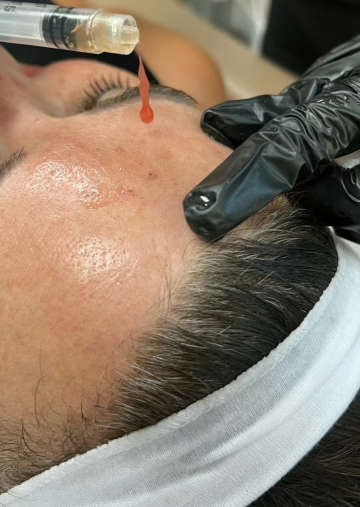
Med Spa in North Scottsdale
Elevate your natural beauty at The Beauty Fix Med Spa in North Scottsdale. We offer expert aesthetic treatments and personalized care, designed to help you achieve your desired results.
North Scottsdale’s Premier Destination for Aesthetic Excellence
Step into a world of personalized rejuvenation at The Beauty Fix Med Spa, your premier destination for advanced aesthetic treatments in North Scottsdale. We’re dedicated to helping you achieve your desired look and feel, offering a curated boutique experience that combines luxury with results-driven care. Our commitment extends beyond traditional beauty treatments; we specialize in regenerative medicine, promoting graceful aging and long-lasting vitality.

Comprehensive Med Spa Services
Explore our comprehensive range of services, including injectables like Botox and dermal fillers, advanced skincare treatments such as chemical peels and microneedling, cutting-edge laser treatments for skin resurfacing, and transformative body sculpting options. We also offer specialized facial treatments, and anti-aging solutions designed to enhance your natural beauty. Our team of expert aesthetic injectors and licensed aestheticians are committed to providing personalized consultations and tailored treatment plans to address your unique needs. Experience the difference at The Beauty Fix Med Spa, where we prioritize your beauty, well-being, and confidence.
Our Services
The Beauty Fix Difference
View our services, or book your appointment now.

Committed to QualityWe are committed to being the only place you need to look great and maintain your healthy, beautiful look! From the most popular looks and brands to the deepest cleansers and the latest treatments, we bring it all to you. Our work is undetectable and quality is never compromised.
We are committed to being the only place you need to look great and maintain your healthy, beautiful look! From the most popular looks and brands to the deepest cleansers and the latest treatments, we bring it all to you. Our work is undetectable and quality is never compromised.

Look and Feel GreatWe are here to help our patients look and feel their best. We stock a variety of essential products for every skin type, concern, and goal.
We are here to help our patients look and feel their best. We stock a variety of essential products for every skin type, concern, and goal.

Future of AestheticsTo create lasting results with the best quality, we choose to remain at the forefront of aesthetic medicine. Our focus is on providing treatment plans for their long-term goals — treatments heal tissues and restore function lost over time. Aging gracefully is part of what keeps them guessing.
To create lasting results with the best quality, we choose to remain at the forefront of aesthetic medicine. Our focus is on providing treatment plans for their long-term goals — treatments heal tissues and restore function lost over time. Aging gracefully is part of what keeps them guessing.

Results You’ll LoveOur goal at our med spa in North Scottsdale is to ensure all patients are happy with our services and results. Our expert team provides recommendations to get the results you desire in a safe and effective way. We want you to be satisfied with your experience from start to finish.
Our goal at our med spa in North Scottsdale is to ensure all patients are happy with our services and results. Our expert team provides recommendations to get the results you desire in a safe and effective way. We want you to be satisfied with your experience from start to finish.

Meet Angelica Chavez
FNP-C, CLT, CANS Owner
Angelica brings a wealth of expertise, bridging the gap between bedside nursing and advanced aesthetic treatments. Her journey, spanning both traditional nursing and specialized aesthetic care, ignited a profound passion for medical aesthetics, prompting her to pursue her Master’s degree. With over a decade of experience as an aesthetic injector and leader in anti-aging solutions, Angelica feels privileged to empower individuals, enhancing both their appearance and self-assurance. She is dedicated to providing personalized skincare treatments, including injectables like Botox and dermal fillers, as well as laser treatments and body sculpting consultations. Angelica champions a holistic approach to wellness, emphasizing the importance of daily exercise and balanced nutrition. Her mission is to not only help patients achieve their desired aesthetic goals but to cultivate inner confidence and promote a vibrant, healthy lifestyle.




